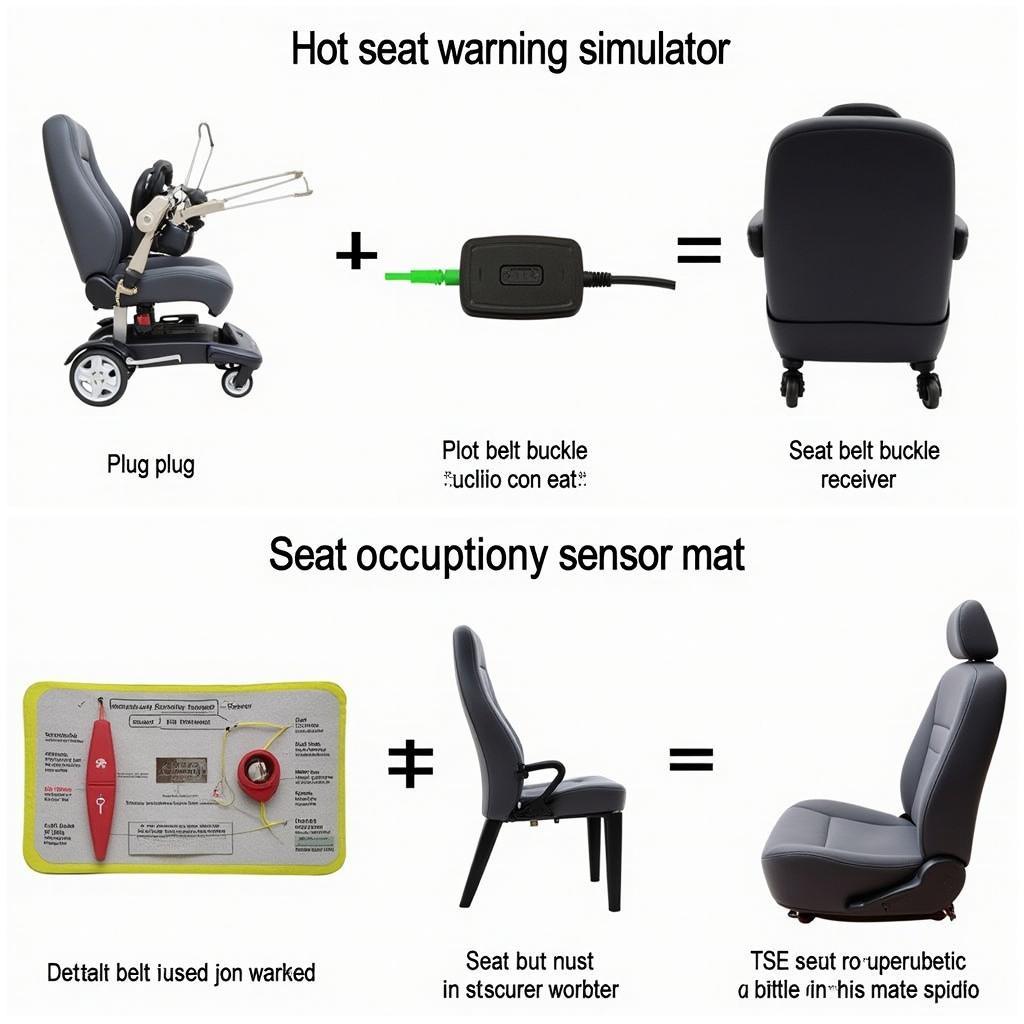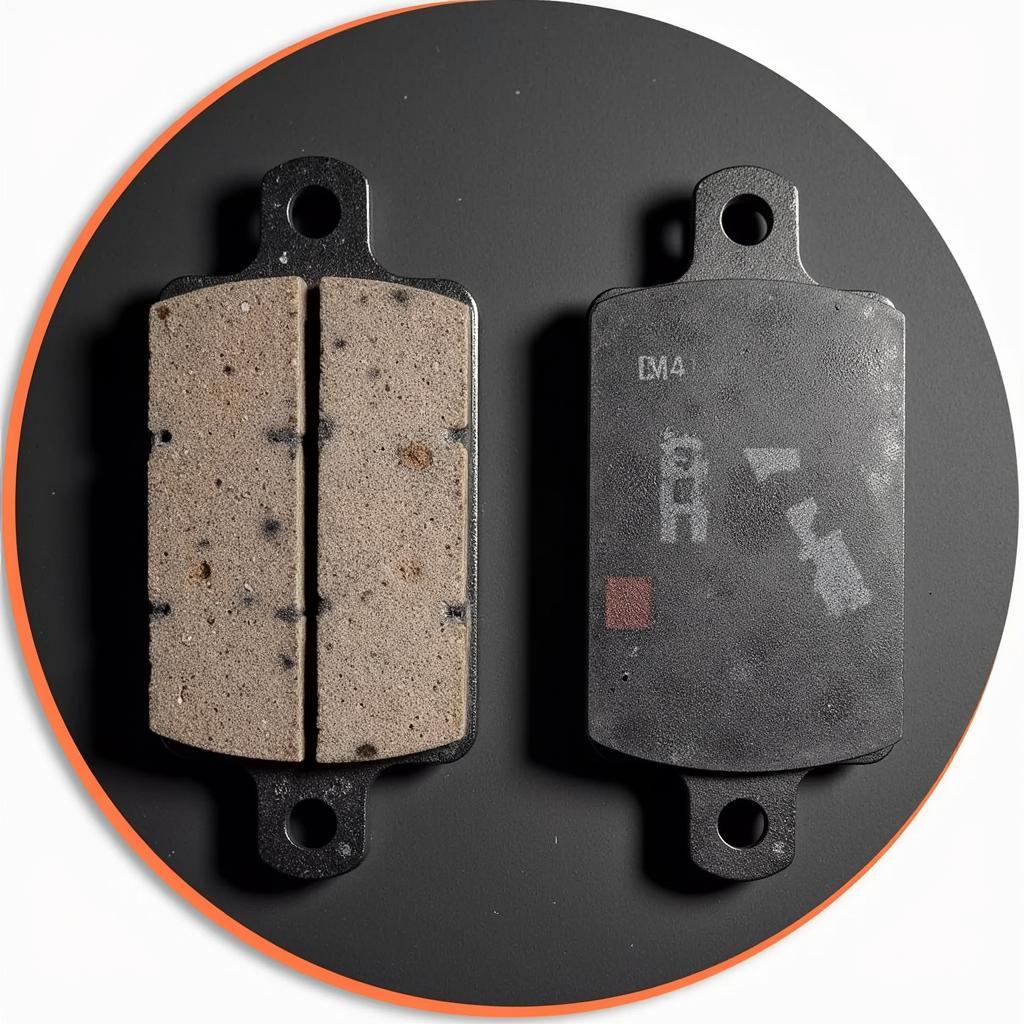The hot seat warning simulator is a crucial tool used in automotive diagnostics, programming, and remote software installation to address a variety of vehicle issues. It emulates the presence of a passenger in the front passenger seat, which is essential for vehicles equipped with occupant classification systems (OCS). These systems determine if the passenger seat is occupied and adjust airbag deployment parameters accordingly, ensuring passenger safety in the event of a collision.
 Types of Hot Seat Warning Simulators
Types of Hot Seat Warning Simulators
Why is a Hot Seat Warning Simulator Important?
Modern vehicles prioritize safety with sophisticated airbag systems. However, these systems rely on accurate data from the OCS to function optimally. A malfunctioning or disconnected OCS can lead to a false “passenger airbag off” warning light, even when the seat is occupied. This can be problematic during vehicle diagnostics, programming, or software updates, as certain procedures require all safety systems to be operational.
Here’s where the hot seat warning simulator proves invaluable:
- Diagnostics and Troubleshooting: Technicians use the simulator to bypass a faulty OCS and accurately diagnose airbag system issues.
- Software Programming and Updates: Many software updates and programming procedures require the OCS to be functional. The simulator allows technicians to proceed without triggering error codes.
- Remote Diagnostics and Support: With remote access to a vehicle’s onboard diagnostics, technicians can utilize the simulator to troubleshoot issues and guide vehicle owners through simple repairs, even from a distance.
How Does a Hot Seat Warning Simulator Work?
The hot seat warning simulator essentially “tricks” the vehicle’s OCS into detecting a passenger. It does this by replicating the electrical resistance or capacitance signal typically produced by an occupant’s weight on the seat.
There are two main types of simulators:
- Seat Belt Buckle Simulators: These are simple devices that plug into the passenger seat belt buckle receiver. They mimic the signal of a fastened seat belt, indirectly indicating the presence of a passenger.
- Occupancy Sensor Simulators: These connect directly to the seat occupancy sensor mat, often located beneath the seat cushion. They generate a more precise signal, simulating the weight and pressure of an occupant.
 Technician Using a Hot Seat Warning Simulator
Technician Using a Hot Seat Warning Simulator
Choosing the Right Hot Seat Warning Simulator
Selecting the correct simulator depends on the vehicle make, model, and the specific task at hand.
- Vehicle Compatibility: Always consult the simulator’s documentation or manufacturer’s website to ensure compatibility with the target vehicle.
- Diagnostic Capabilities: Some advanced simulators offer diagnostic features, allowing technicians to read and clear fault codes related to the OCS.
- Durability and Build Quality: Choose a simulator from a reputable brand known for its durability and reliable performance.
Safety Precautions
While hot seat warning simulators are valuable tools, it’s crucial to prioritize safety:
- Never use a simulator to bypass a faulty airbag system. The simulator is a diagnostic and programming aid, not a replacement for a properly functioning airbag system.
- Always disconnect the simulator before driving the vehicle. Driving with an active simulator can lead to improper airbag deployment in a real-world collision.
“Using a hot seat warning simulator correctly can save technicians valuable time and resources during diagnostics and programming,” says automotive electronics expert, Dr. Emily Carter. “However, it’s imperative to remember that the simulator is a tool, not a solution to underlying safety issues.”
Conclusion
The hot seat warning simulator is an indispensable tool for automotive professionals involved in diagnostics, programming, and remote software installation. By understanding its functionality, applications, and safety precautions, technicians can leverage this tool to enhance their workflow and provide efficient vehicle service. Remember to always prioritize safety and consult vehicle-specific information to ensure proper and effective use of the hot seat warning simulator.

